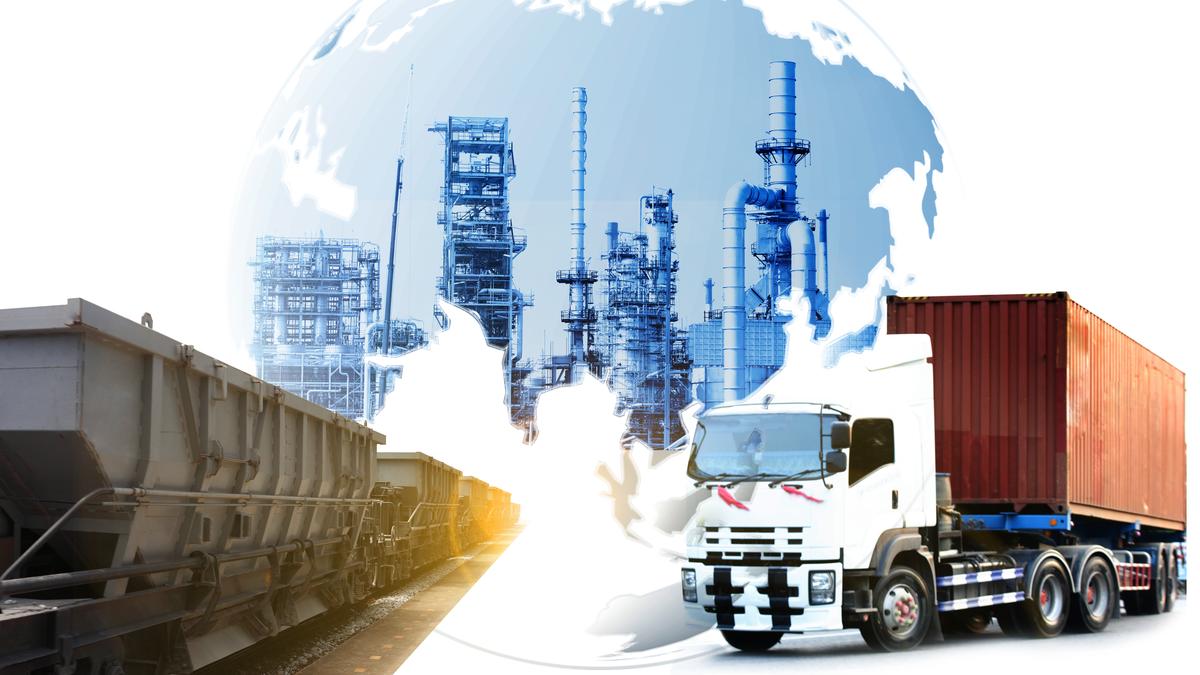‘India’s logistics sector is on the brink of a transformation, and decarbonisation is the key to ensuring sustainable growth’
| Photo Credit: Getty Images/iStockphoto
Viksit Bharat is not just a vision. It is a commitment to having a stronger, self-reliant India by 2047. At its core lies inclusive development, ensuring that growth reaches every citizen, every business, and every region. But can we truly achieve this goal without a logistics sector that is large, efficient and future-ready? From seamless supply chains to last-mile connectivity, an efficient, scalable logistics network is the strength of equitable and sustained progress.
In this growth journey, while infrastructure, efficiency and accessibility are crucial for an inclusive logistics sector, there is one factor that cannot be overlooked — the environment and its prioritisation are absolutely necessary to build a future-ready, resilient logistics network. India’s logistics sector, now one of the most carbon-intensive in the world, must undergo a green transformation. As the nation moves towards a net zero carbon emission by 2070, it is imperative to reduce emissions of transportation, warehousing, and supply chain emissions.
Carbon cost of mobility
This sector bears the brunt of intense carbon emissions, mainly from oil combustion. It contributes about 13.5% of the country’s total greenhouse gas emissions, with road transport alone making up over 88% (International Energy Agency (IEA, 2020). Nearly 90% of passenger travel and 70% of freight movement are dependent on roads, with trucks responsible for 38% of CO2 emissions (IEA, 2023).

Domestic aviation accounts for around 4%, while coastal and inland shipping adds to the emissions load but is significantly less than the road freight movement. Government policies envisage a rapid expansion by 2030 —cargo and passenger movement on inland waterways is set to triple, and coastal shipping cargo movement will increase by 1.2 times. This growth not only fuels economic momentum but also maintains its scalability and sustainability goals.
However, this issue is not just restricted to road freight movement. The warehousing sector, which supports freight movement, is another major emitter. Together, these factors create a pressing issue. How we strike the right balance between growth and sustainability is the question. The time to act is now.

Futuristic approaches
Global examples provide a strong foundation for this transition, with countries such as China and the United States successfully shifting freight transport from road to rail. Rail freight significantly reduces emissions compared to road transport. China has invested heavily in expanding its rail network, and the share of the railways is almost 50%. The United States has also embraced this shift, making rail one of the early decarbonised freight options. India should enhance the share of the railways in freight transport to reduce emissions and improve efficiency — rail has been an early adopter of electrification and is a more sustainable, almost zero-carbon emission mode of transport.
Road freight transport cannot be overlooked, and needs a focused structural change to make it cleaner. India has already taken a bold step in this direction with a recent initiative by the Union Minister for Road Transport and Highways — the introduction of overhead electric wires along highways to power electric trucks. The first pilot project on the Delhi-Jaipur corridor could be a breakthrough in reducing emissions from freight movement while ensuring high efficiency and economic viability.
Coastal shipping and inland waterways have immense potential for decarbonisation. The International Maritime Organization (IMO) aims to slash global shipping emissions by 50% by 2050 (compared to 2008 levels), pushing industry to adopt cleaner fuels such as ammonia, hydrogen, LNG, biofuels, methanol, and electricity. India can fast-track its green transition by introducing LNG-powered vessels, solar-assisted electric boats, and even electric or biofuel-run barges. These emission-cutting steps can keep freight movement efficient and sustainable.
Air transport remains one of the hardest sectors to decarbonise due to its heavy reliance on refined fuels, making the transition a costly challenge. However, advancements in sustainable aviation fuels and efficiency improvements in other transport modes could help offset emissions.
Warehousing, often outweaving in the carbon equation, is another significant contributor to emissions due to high energy consumption. Transitioning to renewable energy sources such as solar, wind, and geothermal power can drastically cut the carbon footprint of warehouses.
Moving ahead
Decarbonising India’s logistics sector is not just about cutting emissions. It is about building a more competitive, resilient and future-ready industry. India’s logistics sector is on the brink of a transformation, and decarbonisation is the key to ensuring sustainable growth. By scaling up rail freight, electrifying road transport, adopting cleaner maritime fuels, and making warehouses more energy-efficient, India can build a high-performing logistics network with a reduced environmental impact. The time to act is now, and with the right policies and investments, India can lead the way in creating a cleaner, greener, and more efficient logistics ecosystem.
The road to a greener future has been paved. It is now time to accelerate.
Sovini Mondal is a Research Associate at the National Council of Applied Economic Research (NCAER), New Delhi. Sanjib Pohit is Professor at the National Council of Applied Economic Research (NCAER), New Delhi. The views expressed are personal
Published – April 19, 2025 12:08 am IST
